12 Myths about dieting, exercising and weight loss routines
Myth #1: Lifting weights will make you big and bulky
Weight lifting has a lot of benefits in terms of losing weight and getting fit. However, a lot of people especially women refuse to lift weights in the fear of becoming big and bulky. Realistically, it takes much more than lifting weights to bulk up.
Muscles do not magically grow without a reason. In order to get big and bulky, you need at least two things. The first is hypertrophy or muscle growth stimulus. Your body needs a switch or a trigger in order to start building muscles. Strength training, sprinting or high-intensity interval training (HIIT), and other kinds of anaerobic exercises are some of the most common muscle stimuli.
The second thing that can make you big and bulky is a calorie surplus. In order to put on weight, you have to eat more calories than you actually burn. That really big and bulky look cannot be achieved without eating more food over the long term.
Doing strengthening activities 3-5 days a week does not bulk you up. Only intense strength training, combined with a certain genetic background and a huge amount of calories can build very large muscles.
For every kilogram of muscle you put on, the energy needed to create that kilogram has to burn at least two kilograms of fat. Fat being a spongy tissue and four times the size of a muscle, when you gain a lean kilo of muscle and lose two kilos of spongy fat, your body is now actually smaller, more toned, and compact.
The fastest way to lose fat weight is to fuel muscle fiber by putting it under strain that it is not used to. Muscle burns more calories than body fat. In fact, for every kilo of muscle, you add to your body, your metabolism is raised by 50 calories a day, even if you are sedentary all day.
Weight training not only improves your appearance, but it also speeds up the fat loss, making it easier while you are dieting. However, it is very important that when you are dieting, you eat the right amount of the right foods in order to prevent precious muscle loss and further lowering your metabolism.
When you eat fewer calories than you burn in a given day, your body cuts down on things that cost energy, which include your muscles. Doing resistance training helps signal your body that it should not cut down your muscles because you need them in spite of a calorie deficit. This simply makes you lose more fat and less muscle.
Strength training has also been found to boost insulin sensitivity. Improved insulin sensitivity allows your body to deal more effectively with glucose. Your body will store less glucose as fat and have a more effective means of transporting protein into cells. Your blood will also be less syrupy and toxic.
Lifting weights also helps speed up your metabolism because as you develop muscles, you burn more energy than fat. It also improves your physical fitness or workability. Research says that weight training improves your maximal oxygen uptake or VO2 max, which is a measure of physical fitness. This means that when you lift weights, you can perform better at physical activities such as running, jogging, and many others.
Myth #2: Eating very little will help you lose weight
One of the most common complaints I would hear from my over 100kg clients is that they would eat very little and exercise regularly but still gain weight. If the gap between energy out and energy is more than around 1000 calories a day, the result can often mean that the body goes into a state of starvation and holds on to as much fat weight as possible. This is why very low-calorie diets do not work and are never sustainable.
Why would your body want to let go of body fat stores when instinctively your brain is sending messages to it? The brain is told that there is a severe lack of food and therefore must hold onto as much fat as possible to stay alive. When the mind perceives a lack of food, it automatically tells the body the best way to survive and fires into action.
In instances of continued famine (eating 1000 fewer calories than the energy we expend in a given day), the body reacts by storing fat. Fat, having the highest energy content at 9 calories per gram, is stored as a fat tissue on the body and supplies the body with over double the useable energy than that of carbohydrates and proteins. Proteins and carbohydrates offer only 4 calories per gram.
Food energy is measured in calories. Every food has a different calorific value. A gram of lettuce has about 0.2 calories, while a gram of avocado has around 7 calories. The scientific measurement of a calorie is the energy needed to increase the temperature of 1 gram of water by 1 °C. It is slightly technical, but it pretty much means that the higher the calorie value of a particular food, the longer it takes your body to burn it off. Or on the positive side, the more energy available, the more energy we have available to perform an exercise or daily tasks.
When we consume fewer calories than we expend over a sustained period of time, we experience weight loss. The energy required to burn one kilo of fat is 7000 calories. Therefore, if you consume 500 fewer calories than what you expend every day for seven days, you will have created a deficit of 3500 calories. So, in theory, you should have burned ½ kilo of fat in one week. This is the case unless the dieter gets too carried away and the gap between input and output becomes more than 1000 calories.
Eating very little does not necessarily mean that you will lose weight because as mentioned above, each food has different caloric values. It is not only about the amount of food that you eat but the number of calories it has. Most diet plans have a lot of restrictions, typically cutting calories, removing carbohydrates, and advising you to put less food on your plate. This is not always the case.
Fruits and vegetables have a low-calorie density. This means that these types of foods don’t pack a lot of calories per bite. They are stuffed with water and fiber and not with calories so they are bigger and heavier. They are more filling and allow you to lose excess weight without having to suffer from chronic hunger. Coupled with lean proteins in the right amounts, weight loss can be accelerated.
Other than fruits and veggies, you may opt for other perfect low- to medium-calorie-dense choices like brown rice, whole-wheat pasta, sweet potatoes, corn, hot cereals, non-fat dairy foods, potatoes, peas and beans, lean, poultry, seafood, and lean meat.
Myth #3: You don’t have to count calories
It has already been established that a calorie is the amount of energy needed to increase the temperature of 1 gram of water by 1 degree Celsius. The calories in food are actually in kilocalories or 1000 calories.
When we say that a carbohydrate like sugar has 4 calories per gram, what we really mean is that it has 4 kilocalories per gram. Basically, one gram of sugar can raise the temperature of 1000 grams of water by 4 degrees Celsius. The calories found in food provide a measure of the energy content.
The number of calories that a person needs will depend on the size of their body and their level of activity. A person with a large build needs more calories than someone who is small. On the other hand, a physically active person requires more calories than an inactive person.
Men need more calories than women. The minimum amount of energy required when resting, called the Basal Metabolic Rate (BMR) can be calculated using the Mifflin-St Jeor equations. These equations require the weight in kilograms, the height in centimeters, and the age in years. The BMR has to be multiplied by an activity factor to estimate the daily calorie requirements.
While we should not be obsessed with every calorie we eat, you must be aware of how many calories you are consuming by the foods you choose to eat on a given day. You need to make sure that you are eating less than you are expending.
People tend to overestimate their physical activity and underestimate their calories. Don’t rely on eyeballing your caloric intake or trying to estimate it. Instead, every day write down what you eat, the corresponding calories, and your physical activities. To make it easier for you to quantify your physical activity, wear a pedometer. Do this every day; not just once or twice a week. Consistency is important for dieting. Sure, this isn’t easy. But if you want to lose weight, this is important to do on a daily basis. This can be a time-consuming task, but it is 100% necessary to make sure you are eating fewer calories than you are expending and the gap is not too large.
Since one pound of body fat has about 3,500 calories, a reduction of 100 calories per day will cause the loss of one pound of weight in 35 days. By just cutting out the calories equivalent to one slice of buttered toast from your diet, you can lose 15 pounds in one year and a half. Similarly, you can gain 15 pounds in a year and a half by eating 100 calories extra per day.
A person can accelerate weight loss by further reducing the calories, but a diet plan should not cut intake below 1,300 calories per day is unhealthy, ineffective, and difficult to sustain. Obtaining all the necessary nutrients with very-low-calorie diets can also be difficult. Another undesirable effect of very-low-calorie diets is putting the body into starvation mode and decreasing the Basal Metabolic Rate
(BMR) slowing down the body’s ability to burn food and more importantly, body fat stores. A decline in BMR reduces weight loss and causes you to regain weight faster when you overeat because you consume more excess calories over your now decreased BMR.
The best diet plan should be one that can be maintained for many months until healthy eating habits become part of one’s lifestyle.
If you are not used to dieting and measuring your food, the best way to start is to just eat normally for about one week, but weigh and measure everything that you eat or drink. This will establish a baseline of your normal eating habits and your caloric intake.
Myth #4: Fruit juice is better than soft drinks
A lot of people do not realize how much sugar they consume when they drink fruit juice. Those who are aware that fruit juice does contain sugar assume that this kind of sugar will not have the same effect on weight gain as the one found in soft drinks. Although fruit juice may contain a few more vitamins than commercial soda, both are actually loaded with the same amount of sugar and carbohydrates.
Next time you are in the supermarket, pick up a bottle of natural fruit juice and a bottle of soda. When you compare them, they have the same amount of calories. Substituting soda for fruit juice will not help you lose weight. The only difference between the two is that soda has sucrose sugars and fruit has fructose sugars.
Some fruit juices even contain more sugar than soft drinks. An eight-ounce glass of apple juice contains 117 calories and 29 grams of sugar, while eight ounces of cola contains only 97 calories and 27 grams of sugar. While that quantity of apple juice does contain small amounts of vitamin C, it is full of empty calories. You can simply get vitamin C from other low-calorie sources.
Often dieters will focus only on the solid foods they eat and not on the fluids. Consuming 4 glasses of fruit juice a day will increase your calories by almost 500 per day, often reducing the deficit and preventing weight loss.
Manufacturers of fruit juices often tell you that you can get your daily fruit serving from the juice. You have to remember that eating an actual piece of fruit is the better choice because when you drink juice, what you are consuming is the sugars of the fruit. Whole fruits contain healthy fibers that cleanse your intestines and control your hunger by making you feel satisfied. Fruit juice doesn’t contain any of these fibers.
An eight-ounce serving of orange juice has 112 calories, 21 grams of sugar, and only 0.1 grams of fiber. On the other hand, a whole orange only contains 45 calories, 9grams of sugar, and 2.3 grams of dietary fiber. Eating the whole fruit will give you the sweet taste you crave in fruit juice while providing you with a little amount of sugar and calories.
Don’t fall into the trap of buying brands that promise to contain100 percent fruit juice. Some are actually fruit juice cocktail that contains large amounts of sugar. These types of juices are generally cheap, but its affordability comes at a price to your health. These fruit juice cocktails are made by diluting fruit juice with water and sweetening it with high fructose corn syrup.
High fructose corn syrup consumption is linked to a number of health problems that include heart disease and type 2 diabetes. You always have to check the sugar content of the juice you are buying because even if there is no high fructose corn syrup, it may still be loaded with a lot of sugar.
With some exceptions, it is not advisable to drink your calories. Unless you are drinking low-fat or fat-free milk, just stick to plain water because liquid calories can rapidly add up and spoil your diet. If you ever crave for a sweet drink, try eating a piece of whole fruit, like an apple or orange and drink a glass of water. This is a great way to quench your thirst and have the sweetness of the fruit along with its vitamins and natural fiber.
Myth #5: The only way to lose weight is to cut your carbohydrate intake
Low carbohydrate diets such as the Atkins diet work by keeping carbohydrates so low, that the body’s only choice is to use the next available fuel source: fat. Dieters that drop their carbohydrates drastically will notice an almost immediate drop in weight. Unfortunately for the dieter, this initial weight loss is nothing more than a loss of water. When carbohydrates are broken down, they become glycogen. One part glycogen holds on to four parts of water. The body consists of up to 75% water and less glycogen means less water.
Also, as the dieter is unable to eat carbohydrates, the only nutrients left to consume are proteins and fats. A diet in which protein makes up more than 40% of your daily calorie intake can cause a build-up of toxic ketones. Low-carbohydrate diets can thrust your kidneys into overdrive in order to flush these ketones from your body.
As your kidneys are responsible for ridding your body of these toxic ketones, you can lose a significant amount of water. This, in addition to the drop in glycogen which reduces water content in the body, can put you at risk of dehydration, particularly if you exercise heavily. Along with the loss of water, you lose muscle mass and bone calcium. The dehydration also strains your kidneys and puts stress on your heart.
Two kilos of water will usually be lost within the first two to three days. After a few days, the body will go into a state of ketosis and start using fat to fuel the body. Fat tissue now starts getting burned as opposed to being stored. That being said, weight loss will only occur if you keep your calorie intake less than what you are expending.
These diets are not sustainable and are very restrictive. Eating high amounts of fat and protein, the only two food groups allowed, causes two problems: (1)it puts a lot of stress on the digestive system and internal filtering organs, and (2)the body becomes super sensitive to carbohydrates when a person comes off the diet.
Most low-carbohydrate dieters will sooner or later give in to temptations of indulging into tasty baked or deep-fried carbohydrates. When carbohydrates are re-introduced, the body becomes super sensitive and overcompensates after being deprived of carbohydrates for a sustained period of time. It is comparable to a sponge that has been squeezed dry. As it comes in contact with water again, it soaks it up very fast. The body sucks up the carbohydrates, where the dieter suffers from water retention and looks a bit bloated.
Carbohydrates are not solely the reason for weight gain. They just need to be moderated and carefully selected so they will work for you instead of against your fat-loss goals. Extreme carbohydrate reduction can cause bad breath, nausea, weakness, fatigue, mood swings, breakdown in muscle tissue, and dizziness. Diet plans that eliminate carbohydrates are usually low in fiber, vitamin C, calcium, antioxidants, and B vitamins. They are likely to be high in fat, specifically saturated fat. Saturated fat can cause high cholesterol level that can increase the risk of heart disease.
You should not cut all carbohydrates from your diet. Instead, cut down on your carbohydrate intake to around 30 – 40% of your daily calorie intake. Limit your intake of desserts and other unhealthy carbohydrates. Go for fiber-rich ones such as whole grains, bran, oats, etc.
Myth #6: Cutting all fats out of your diet will help you lose fat
Our bodies need fats to function. Eating fats containing HDL cholesterol can actually help reduce cholesterol levels in the body, reducing the risk of stroke and heart disease. Cutting too much fat out of our diets can actually be dangerous and counter-productive for fat loss.
When we cut fat out of our diets, it sends a message to our brain that there is a lack of fat. Knowing that fat is essential for survival when the body senses a lack of fat, it starts holding on to as much fat as possible from the small amounts it receives; as opposed to knowing there is a plentiful supply and therefore allowing the body to use it as its secondary fuel source.
Over the last 50 years, the percentage of people in most countries who are overweight has increased dramatically. This is due to many factors, but not because people’s fat intake has since increased. Over the last five decades, the consumption of carbohydrates as a percentage of total calorie consumption has increased significantly – not fat consumption.
Fat is a fuel that does not make your body produces more insulin; carbohydrates do that. Fat plays an important role in slowing down the absorption of blood sugars from broken-down carbohydrates which stabilizes blood sugar levels and reduce insulin secretions. The more insulin your body produces the more energy you will store away as fat.
The word “Fat” is one of the least liked words in the English vocabulary.
No one likes to be told that they are fat. But fat is one of the three essential nutrients we need to survive and is crucial for normal body function. Without it, we could not live.
Not only does fat supply us with energy, but it also makes it possible for other nutrients to do their jobs. Fat is a high calorific energy source that provides the body with 9 calories per gram. More than double than that of carbohydrates and proteins.
So how much fat should you eat?
According to the Dietary Guidelines for American 2005, the following daily intake percentages are recommended:
Children aged 2 to 3 – total fat limited to 30%-35% of total calorie intake
Children aged 4 to 18 – total fat limited to 25%-35% of total calorie intake
Adults aged 19 and older – total fat limited to 20%-35% of total calorie intake
Fat is essential to our survival, and let’s face it, it makes almost any food taste amazing! When we dine at a restaurant, we often marvel at how amazing their dishes taste in comparison to the dishes we create at home. The main difference between home cooking and restaurant food is the fats added in the way of oils and dairy products such as cream.
When you make the decision to eat out, you have no idea of knowing what the chef has added to the dish. Often there will be high amounts of seasonings such as Monosodium Glutamate (MSG) and fats added to enhance the flavors of the dish. Even salads often contain high amounts of fats from dressings, cheeses, and meats. So when you dine out, my recommendation would be to order whatever you want.
Choose a dish that gets you excited, eat it, and most importantly, ENJOY IT! Dining out is fun and a great way to socialize with friends and loved ones. If you are conscious about your health, you cannot afford to risk the game of Russian Roulette when guessing what has been put into the dish. I look forward to eating whatever I want when I dine out and use this as an incentive to be well behaved during the remainder of the week. Sometimes instead of dining out,
I will spend half the amount of what it would have cost for a meal out and go to the supermarket and buy some salmon, scallops, or prawns and have a tasty, but controlled meal of high-quality foods. There is no need to compromise on taste, just because you are on a diet. You just need to establish boundaries and make a decision that your health is worth the discipline to stay within them. If we pick the fats and oils that we ingest, we can still consume around 20 – 30% of our daily calories and still lose fat weight.
Myth #7: To lose weight you must cut out all treats
Restrictive dieting can be very difficult to sustain especially when you feel deprived of the treats that you really love. Deprivation is the downfall of all diets. You can have a small portion of dessert to satisfy your sweet tooth and still stick to your diet.
You just need to master portion control. Food is pleasurable for many people. You can treat yourself with your favorite sinful food, but don’t overindulge. You can create a diet that lets you eat sweets once a day or once a week. Dieters who deprive themselves tend to go overboard when they finally get a taste of candy, cake, or cookies after a long period of time.
A diet regimen that allows you to dig into occasional treats while still focusing on healthy nutritional choices will certainly help you balance your cravings yet still be a focus on the necessity to lose weight. Eating healthy foods while still allowing yourself regular treats has a lot of benefits. You eliminated the feeling of deprivation, which means that you learn to control your yearning for tempting foods.
If you do lose weight through a strict and low-calorie diet, but never let yourself have some tempting food occasionally, you may have difficulty to eat small portions of sweets once you reach your goal. When you set a defined portion of treats per day or allocate a certain amount per week, you will successfully stick to your eating plan and lose weight.
Because you have a treat waiting for you at the end of the day or week you find it easy to eat healthy foods. You don’t have to get guilty about giving in to your cravings, which usually ends up in overeating. It is preferable to have these treats once a week since eating more calories once a week temporarily boosts your metabolism. Chances of gaining weight from occasionally treating yourself weekly are less.
The secret to staying on a healthy eating plan while having treats is to immediately resume your diet once your treatment time is overindulged in a weekly treat by eating normally and following your diet plan six days a week. Choose one of the weekends to have your beloved meal, followed by a small amount of your chosen dessert. You may also have a three-times-a-week indulgence by portioning out half a serving of chips, chocolate, or ice cream.
When you buy a treat to balance your dieting week, choose one serving at a time, or divide the bigger bag into individual servings. Putting them into snack-sized zipper bags is a great idea so you won’t overindulge. On your cheat day, eat healthy, filling foods so you won’t overeat your treatment because of hunger. Don’t think of your treat as an off-limit food. Instead, think of it as an acceptable part of your healthy diet plan.
Opt for the healthiest treats that can satisfy your cravings. This way, your treat would not be that sinful and you will still be contented. If you love chocolates, choose the dark kind. It is a much healthier choice than the milky variety. If you want a cookie, select those made with oats or whole grains. Gelatin and yogurt are also healthy dessert choices.
Know how many calories you are expending and how many calories you are eating. You can still eat a treat as long as your calorie intake for the day does not exceed what you are expending.
When you eat a treat, choose to and enjoy it. So many people succumb to cravings, sneak a treat, and are too busy feeling guilty to enjoy it.
Sit down and enjoy every bite. Remember that treats are great rewards for several days of perfect eating.
Myth #8: As long as I exercise, I can eat what I want
This is not true. While exercise is important, it only equates to about 40% of the equation. The ONLY way to lose weight is to eat less and move more.
As obvious as it sounds, this really is the only way any diet will work. From the Atkins Diet to the South Beach Diet, diets will only work if the dieter consumes fewer calories than they expend, with one exception.
While it is true that weight loss can only occur when we expend more calories than what in ingest if we eat too little and make the gap between energy intake and energy output too large, things can go terribly wrong. For instance; Put Lance Armstrong on a daily calorie intake of 2000 when on an average training day, he would burn more than 13000 calories and before long, he would be sick as a dog and in a state of anorexia.
One of the most common complaints I would hear from my over 100kg clients is that they would eat very little and exercise regularly but still gain weight. If the gap between energy out Vs energy is more than around 1250 calories a day, the result can often mean that the body goes into a state of starvation and holds on to as much fat weight as possible. This is why very low-calorie diets do not work and are never sustainable.
Why would your body want to let go of body fat stores when instinctively your brain is sending messages to the body that there is a severe lack of food and therefore must hold onto as much fat as possible to stay alive for as long as possible? When the mind perceives a lack of food, it automatically tells the body the best way to survive and fires into action. In instances of continued famine, (eating 1250 fewer calories than the energy we expend in a given day) the body reacts by storing fat.
Fat, having the highest energy content at 9 calories per gram, is stored as fat tissue on the body and supplies the body with over double the useable energy than that of carbohydrates and proteins. Proteins and carbohydrates offer only 4 calories per gram. Remember, we are genetically wired for survival.
Food energy is measured in calories. Every food has a different calorific value. A gram of lettuce has about 0.2 calories, whereas a gram of avocado has around 7 calories. The scientific measurement of a calorie is the energy needed to increase the temperature of 1 gram of water by 1 °C. Slightly technical, but pretty much meaning that the higher the calorie value of a particular food, the longer it takes your body to burn it off. Or on the positive side, the more energy available, the more energy we have available to perform an exercise or daily tasks.
When we consume fewer calories than we expend over a sustained period of time, we experience weight loss. The energy required to burn one kilo of fat is 7000 calories. Therefore, if you consume 500 fewer calories than what you expend every day for seven days, you will have created a deficit of 3500 calories. So, in theory, you should have burned ½ kilo of fat in one week. This is the case unless the dieter gets too carried away and the gap between input and output becomes more than 1000 calories.
Energy Output
Our energy output is determined by two things. 1. The calories burned from normal bodily function (Basal metabolic rate or BMR) such as breathing, organ function, and digesting food. 2. Additional natural movements such as moving limbs and walking throughout the course of the day and any additional exercise.
Working out your BMR
BMR is dependent on the individual’s body weight and can be roughly calculated by multiplying your lean body mass in pounds by 14.
E.g. A person at 200lbs. with 20% body fat leaves 160lbs. lean mass. 160 x 14 = 2240 calories. That is your BMR. Record this number below.
My BMR is: ________ Calories per day
Then you need to add additional exercise to find out how many calories you approximately expend on a daily basis.
Count how many minutes of exercise you are doing on a daily basis and at what intensity. Eg. 60 minutes at 80% intensity = 48 minutes of 100% intensity.
Count the same every day for a week.
Monday: ________mins at _____% intensity = _______ active mins
Tuesday: ________mins at _____% intensity = _______ active mins
Wednesday: ________mins at _____% intensity = _______ active mins
Thursday: ________mins at _____% intensity = _______ active mins
Friday: ________mins at _____% intensity = _______ active mins
Saturday: ________mins at _____% intensity = _______ active mins
Sunday: ________mins at _____% intensity = _______ active mins
TOTAL _______ active mins
Take your total number of active minutes and divide the number by 60. =_______ Then add this number to 14. 14 + _____ = _____
Now take that number and multiple it by your total lean mass in pounds.
This is your daily energy expenditure.
For dieters that want to lose fat weight, subtract 500 to 1000 calories off your daily expenditure and consume that amount of calories.
For some smaller people, you may find that this level of calories is too low. Even for the smallest dieter, it is important to never consume any less than 1250 calories for a woman and no less than 1800 calories for a male for any sustained period of time.
Energy Input
Our energy input is determined by the quantity of food we ingest and their combined calorific values.
We all know the effects of eating too much and moving too little. The result is weight gain and decreased energy.
If you were to consume 2500 calories in a day, and only burn 2000, it’s not hard to see that you are going to gain weight. Your body is now carrying 500 calories more than it was able to burn off and therefore, this excess energy has to be stored. When the body stores excess energy, it will first use Carbohydrates, then fats, proteins, and lastly alcohol.
Myth #9: As you get older, you’re destined to become overweight
With age comes knowledge and, sometimes, weight.
The first clue as to why some of us struggle to effectively manage our health and weight as we get older may be revealed if we take a moment to remember our childhood. For most of us, in our preteen years, we were bursting at the seams with energy and cramming every waking minute with as much life as humanly possible.
Rising with the early birds and last to bed at night, we would often challenge our parents’ rule that we should get a decent night’s sleep. As adults with the weight of the world on our shoulders, we remain in our beds for as long as we possibly can, thinking of all the reasons to stay in bed, rather than getting up to meet the new day. The snooze button has become our new best friend, and our worst enemy is the alarm clock sitting on the bedside table.
With not a care in the world and so many things to do, we used to let our lives revolve around creativity, dreams, and wishes of what might be possible. This becomes quite the opposite when we get older. We succumb to the stresses involved in working or in raising children, eat food for comfort rather than a necessity, and basically just try to survive.
For those of you that went to school more than two decades ago, you would have (1) eaten far less of processed food and (2) eaten at set times, during your scheduled breaks. We ate what we could get in the breaks we were given and didn’t have the option to raid the fridge or the nearest vending machine to satisfy random food cravings. With our choices reduced, discipline was easier.
With no car and no driver’s license, we were forced to use our feet as our transportation. We burned more calories and got far more fresh air than the average adult.
Socializing when we were kids could be playing with a Frisbee on the beach or playing physically active games outside. These days, socializing is commonly done in a restaurant or bar with a few beers and calorie-dense food.
You can easily see why many people make the assumption that as they get older, weight gain is inevitable. It is probable yet preventable. The first step to rewinding the body is to act like a child. Move more, eat less processed foods, be disciplined as to when you eat and enjoy life. Your energy levels will go up and you will feel alive again.
Yes, it is true that as we get past the age of 40 years, our bodies start to decrease growth hormone production by around 0.5 – 1% per year of age. All we need to do is to move 0.5-1% more or eat a little better.
The second clue as to why we sometimes struggle to lose weight may lie with our ancestors. If we look at the lifestyle and eating habits of our prehistoric ancestors, we may better understand the constant battle we now face against our pre-programmed genetics.
For millennia, human beings have been hunters and gatherers by nature. A man’s role was predominantly to impregnate a woman, thus creating children, then to provide shelter and food.
When a man puts on weight, the first place fat tissue gathers is around the abdomen. Unfortunately, this is also the last place the fat comes off too.
When we think of the prehistoric human, we might conjure up images of Spartan-like men with six-pack abs and bulging biceps. This, however, would probably not be the case. The reason is preprogrammed genetics.
Our bodies evolved in a design geared toward ensuring procreation and the continuation of human existence. Since the role of a male Homo sapiens was to make sure he and his dependents were fed and since food often came in the form of dangerous wild animals, the male anatomy developed some safety features. Fat gathers around the stomach region to protect vital organs and increase the chances of survival if attacked. These days, we’re fortunate that don’t need to hunt for our dinner.
In the case of women, whose predominant purpose once was to bear and raise children, fat tissue naturally tends to gather around the hips to protect their childbearing organs. Again, for a woman, this is the first place where excess calories are stored and the last place it will come off.
Fat tissue is also one of the best forms of insulation, another reason why fat gathers around our vital organs. You will find that races of people that live in warmer climates find it far easier to keep fat off, as the body does not require it for insulation. People that live in colder climates struggle more to shift the weight as the body instinctively needs it to stay insulated.
Although we now live in a more controlled and much safer environment, these safety features are, unfortunately, already programmed into our genetics. All you need to do is look around and see the areas in which men and women generally will store their body fat.
As you can see, we are not actually designed to have six-pack abs, and you now understand why so few of us have chiseled abs. It is actually highly unnatural, hence the difficulties men and women have with shifting fat from those protective regions.
The healthy range of body fat for men to maintain is between 12 to 18 percent. For the abdomen muscles to be noticed, the outer layers of fat need to be reduced to around 6-8 percent body fat. To go against nature, you need to understand the body so you’ll know how to trick it into letting go of fat stores.
Despite the fact that we constantly battle our pre-programmed genetics, if we plan our eating habits and make exercise a part of our day, we can win the fight against fat. Fortunately these days, fresh vegetables, butchered meats, and dairy are so readily available that we can pretty much consume quality foods whenever we wish.
Myth #10: Never eat after dinner
According to a reputable source, namely the National Institute of Diabetes and Digestive and Kidney Diseases, eating after 8 p.m. doesn’t automatically cause weight gain. What time of day you eat does not matter.
What matters is what and how much you eat, as well as how much physical activity you do throughout the day; these will determine whether you gain, lose, or maintain your weight. No matter when you eat, your body will store excess calories as fat.
A tip to remember if you want to have a pre-bedtime snack is to think first about how many calories you’ve eaten that day. Make sure that the snack fits your desired daily calorie intake. You should also avoid snacking in front of the TV since you can overeat more easily when you’re distracted by the TV.
While it is not wise to eat a heavy snack before bed as your metabolism is naturally slower while you sleep, your body can easily process a protein shake and for active people, this can actually help accelerate fat loss and minimize muscle wastage.
This will help you get the most from your sleep, by keeping your metabolism elevated while you sleep and giving your body something to process. It also reduces the time from your dinner to your breakfast, thus reducing the time your body will spend in “starvation mode.” Because of the large gap in time between dinner and breakfast, the body can jump to the conclusion that it is never going to be fed again, and it starts storing body fat in case famine is around the corner.
So have that chocolate protein shake before bed! It will also reduce the possibility that you’ll head for the ice cream.
In an article about the top ten dieting mistakes, registered dietician Dana Wu Wassmer of Cosumnes River College tackled the myth that a person who wants to lose weight should not eat after 8 p.m. Many people avoid eating after 8 p.m. because they believe that the calories somehow turn into fat after that time. The human body is amazing, and it works around the clock. It doesn’t punch out whenever it’s 8 p.m. and call it a day. It works to keep the heart pumping, the lungs breathing, the brain functioning, and so on.
If you burn 2,000 calories during the day and you ate 1,500 of those calories after 8 p.m., you need not think you are destined to gain weight from those calories. Since calories consumed after 8 p.m. don’t automatically turn into fat, how much you eat on average is what will determine whether your calorie count meets your body’s energy needs. Eating more than what you need will lead to weight gain. When you eat less, weight loss will occur, and it’s not related to the time of day. If you often eat higher-calorie foods like ice cream, cake, fast food, or leftovers late at night, you should not be surprised at all if you end up with more calories than needed.
That said, it is still advisable for maximum weight loss, to eat the majority of your calories during the hours that you are burning calories to speed up the utilization of the foods eaten.
Myth #11: You should eat three square meals a day. Snacking can make you put on weight
Leaving to large gaps between meals will make your body go into starvation mode. Four hours after your last meal, your body automatically shuts down and goes into starvation mode. Fats contain 9 calories per gram, so the more fat we have stored, the longer the body can continue to live in this perceived state of famine.
Dr. Scott Isaacs, in discussing the leptin boost diet, said that eating frequently maximizes leptin efficiency. Leptin is a peptide hormone produced by fat cells, and it plays a role in the regulation of body weight by acting on the hypothalamus to suppress appetite and burn fat stored in adipose tissue.
You can break the famine-feast cycle when you convince your body it’s not starving. Although the idea of eating more to lose more might not sound sensible, the truth is, eating regularly helps accelerate fat loss and keep one’s metabolism fired up. Unfortunately, eating only three square meals a day and not snacking have been ingrained into people’s minds since childhood.
Even the American Dietetic Association (ADA) challenges the myth that snacking causes weight gain. The ADA Complete Food and Nutrition Guide would affirm that eating a snack during a long stretch between meals can take the edge off your hunger that might otherwise lead to overeating. When you eat a snack, you can be more in control of your food choices and less inclined to overeat the next time you have a meal.
Snacking need not get in the way of good nutrition. It does not have to be equated with junk food since you can choose better alternatives that truly help to fill in the gaps between meals and complete a healthy diet. If you simply choose nutrient-rich snacks that fit into your healthy eating plan, you can use snacks as a way to fill in necessary food-group gaps too.
Healthy snacking doesn’t mean giving up fun food either. You can eat fun food and still follow a diet that is low in fat. It just requires a little planning. Keep in mind that the more physically active you are, the greater your discretionary calorie budget.
Some say that certain foods make you burn calories, but this is not true. Many people try and create hype around loose claims to sound impressive. This related myth probably came from the fact that if you eat lettuce, the body burns more calories digesting the lettuce than what the lettuce contains. No “magical” foods have a significant impact on burning calories.
Again, just eat clean, unprocessed foods with a combined calorie count that’s less than what you expend in a given day. The fact is that you can eat snacks as long as the total calories from your snacks do not make you exceed the number of calories you need in a day.
Myth #12: Low-fat or non-fat means fewer calories
Often when food manufacturers reduce fat, they replace it with carbohydrates (which serve as cheap fillers) and the slow killer, sugar. The calorie range is often the same and has the same, if not a worse, impact on weight gain.
Consumers really should read the nutritional information on their food packaging. Many people misguidedly think that a certain type of candy may be eaten in large quantities because its label says fat-free. If they actually checked the nutritional information, they would find that the amount of carbohydrates in the product is sky-high.
Foods that are rich in carbohydrates (particularly high glycemic carbohydrates) get broken down by the body very quickly and are released into the blood as glucose or blood sugars. This spike in blood sugar triggers the body to release insulin to regulate sugar levels. Insulin is a hormone that is responsible for storing fat. So when eating a meal, try to consume a balance of fats, carbohydrates, and proteins. The fats and the protein helps slow down the absorption of carbohydrates, reducing the risk of a blood sugar spike and insulin release.
Where your health is concerned, the carbohydrates you put in your body should be the natural kind, like those found in fruits, vegetables, and whole sprouted grains, rather than packaged and overly processed food sold in groceries and even in natural food stores. If all the carbohydrates you eat come from junk food, then you would be on your way to lifelong health issues that can include diabetes, heart disease, high blood pressure, and stroke.
Fat in foods gives us a feeling of satiety and the sense that we’ve had enough to eat. If your meal doesn’t have fat, you might keep eating until you’re really stuffed with more calories than you would’ve had if you had just put a little olive oil in your salad. Good-quality saturated fats enhance the immune system, protect the calcium-depositing mechanism in bones, and have antimicrobial properties.
Summary
Achieving and maintaining optimum health is not an easy task, but with the right knowledge, it can be very simple.
Many people fail at trying to lose weight, simply because they do not understand how their body’s work and what they need to do to trick the body into letting go of unwanted body fat.
As discussed before, we are not actually designed to have abs, but with the right eating plan and exercise routine, anyone of any size, shape, sex, or race can have abs and the body they have always wanted.
With this information, you can make educated decisions on a daily basis so that you can achieve the body you want and enjoy all the benefits of being the best you can be.
Yours in Health,
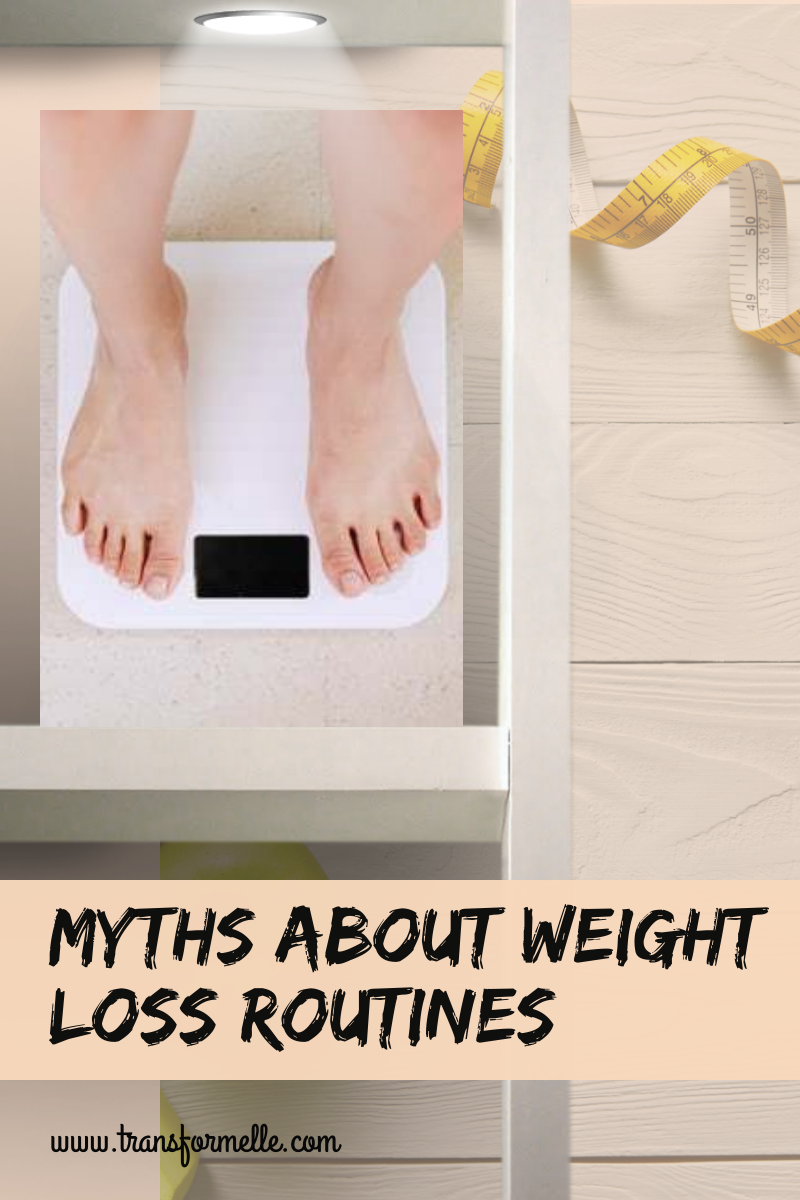
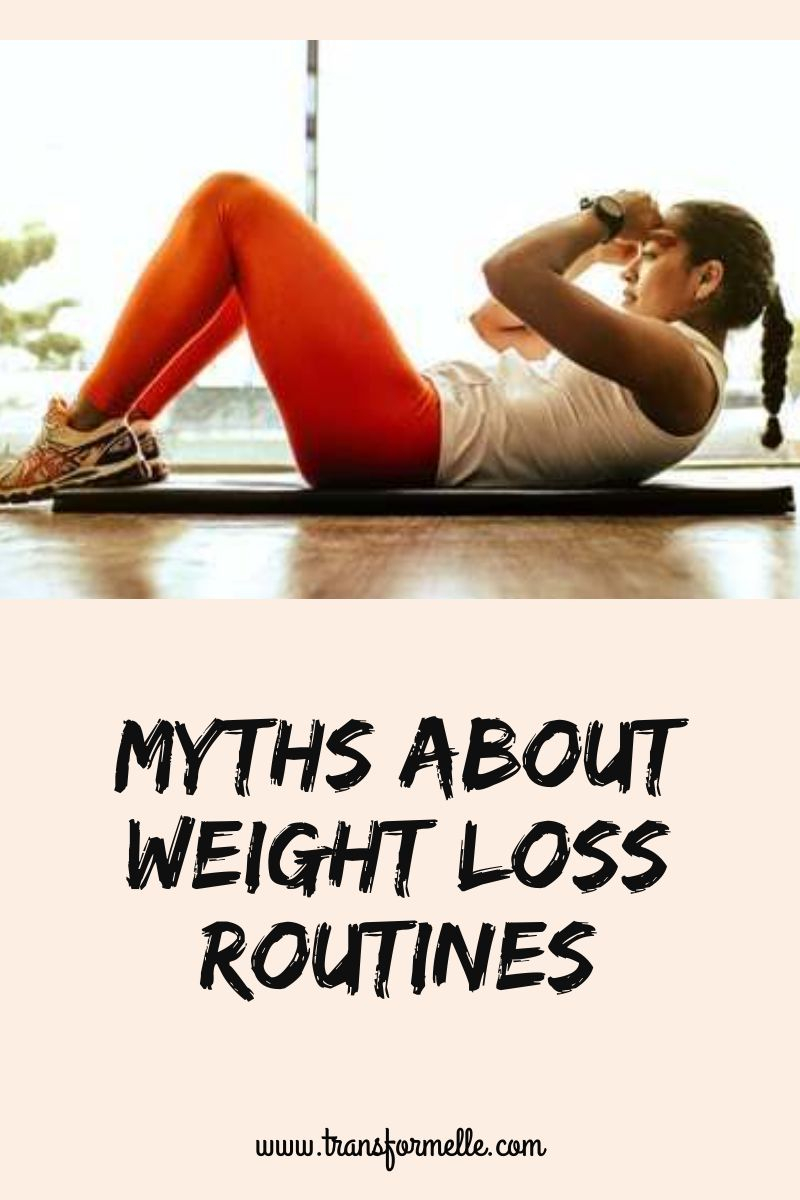
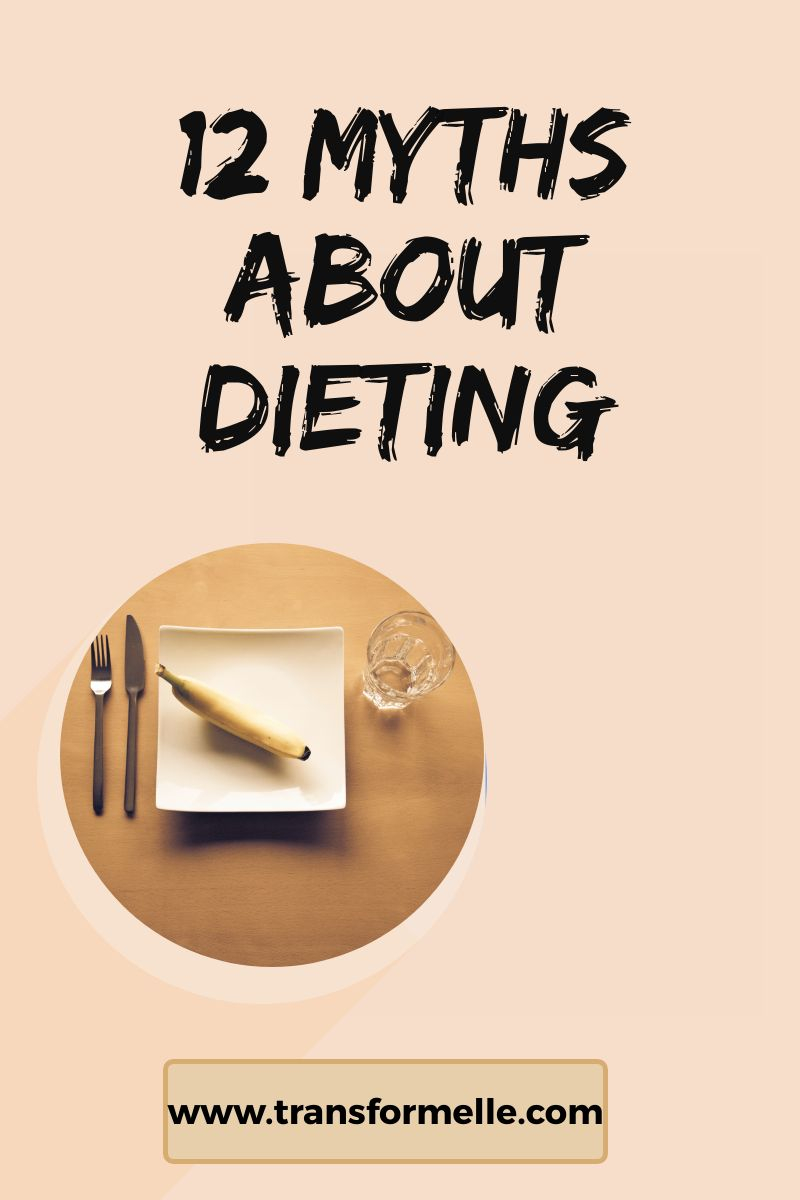
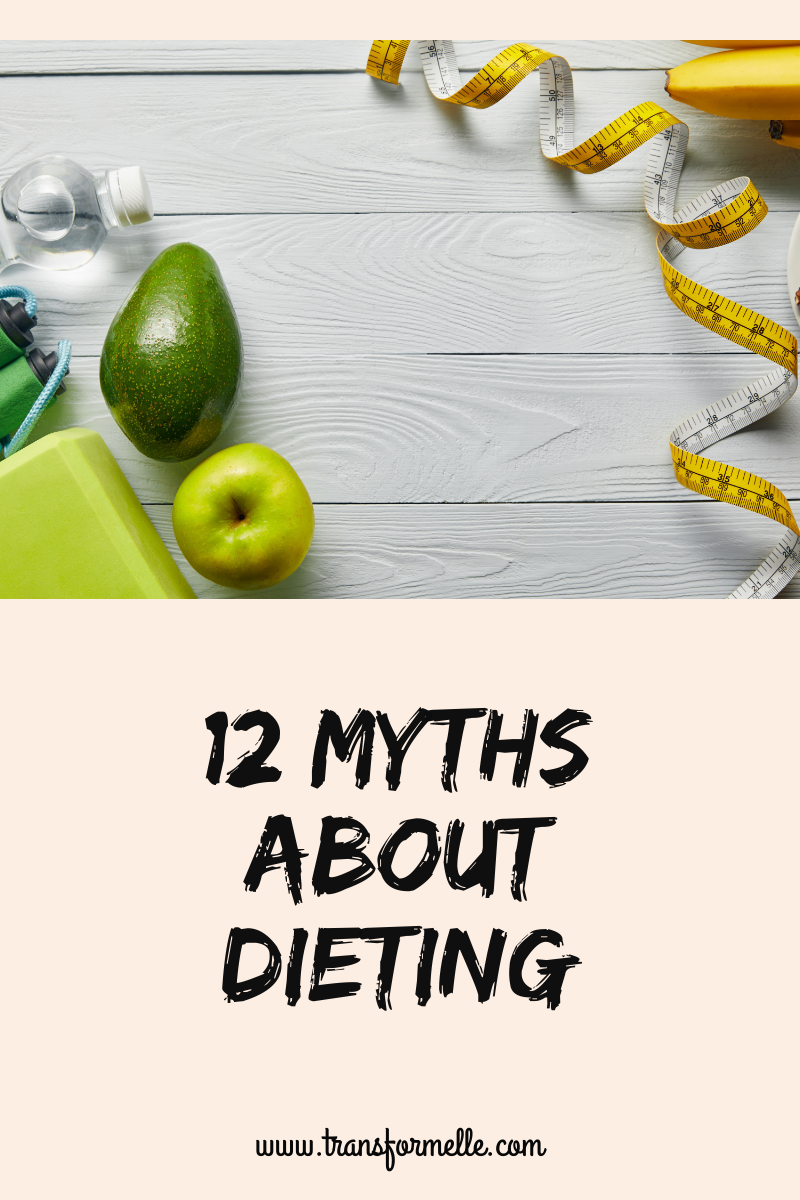
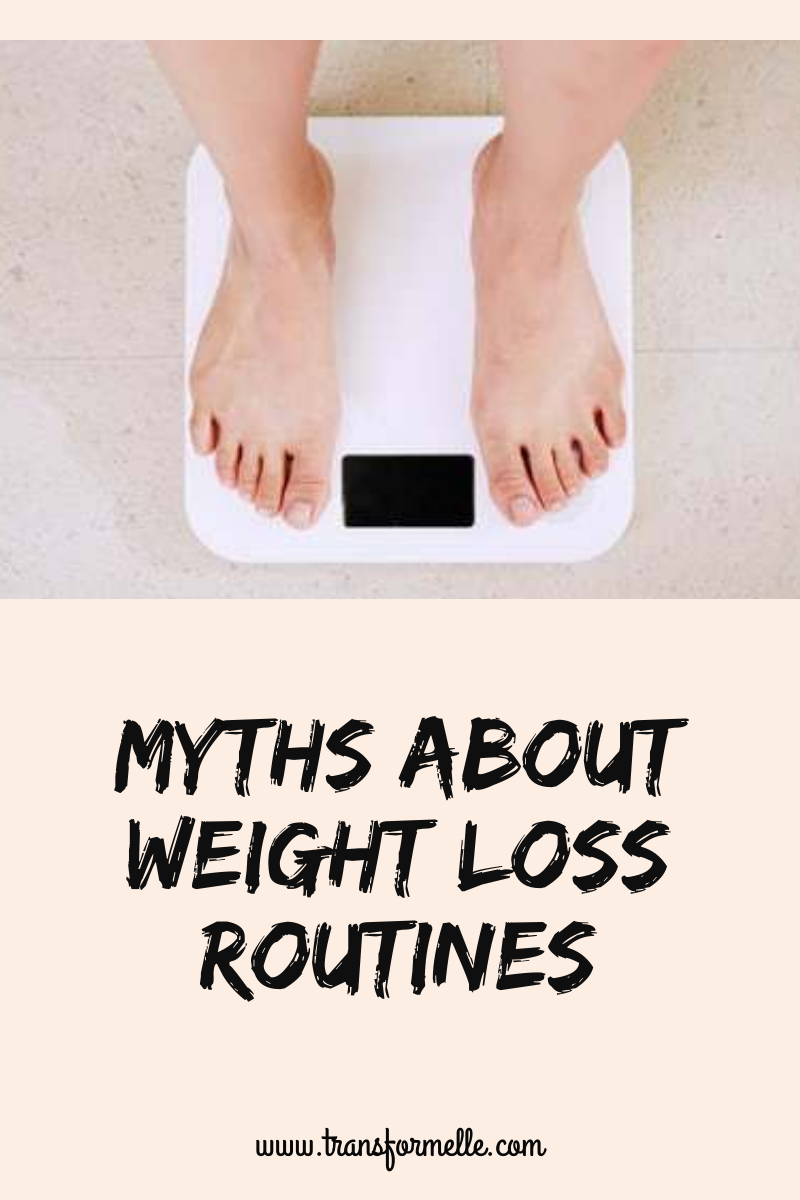
Did you find this post useful, inspiring? Save one of these pins above to your healthy lifestyle board on Pinterest.










0 Comments
Trackbacks/Pingbacks